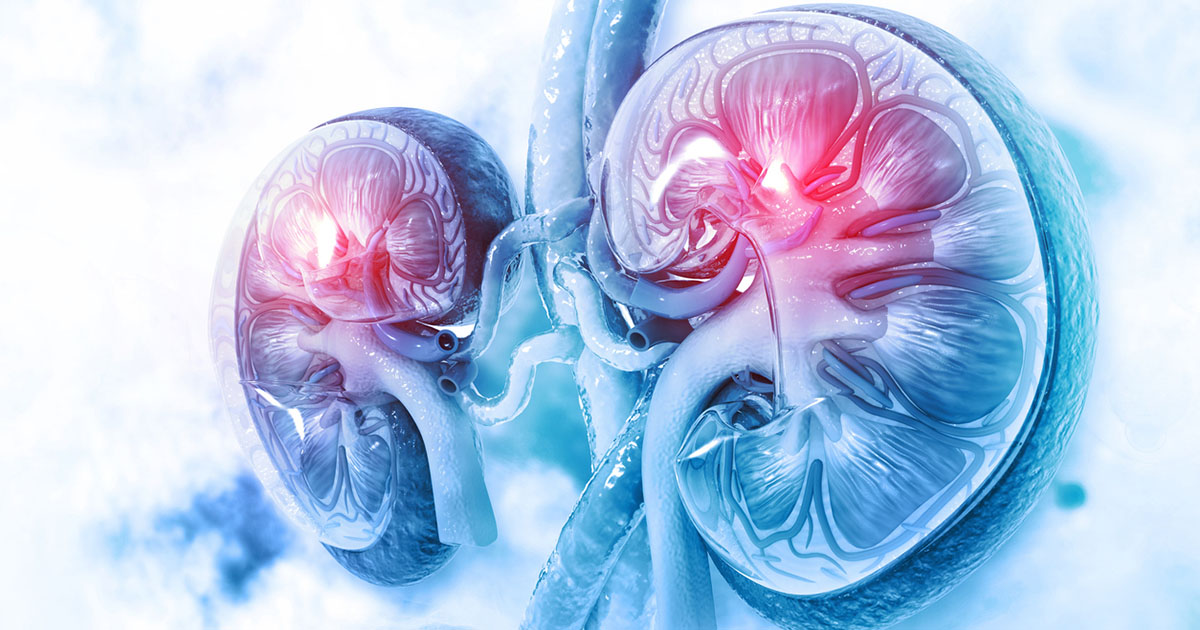Clinical scenario
A 41-year-old South Asian man attends your surgery with newly diagnosed type 2 diabetes, diagnosed by the nurse practitioner on the basis of symptoms, and a random plasma glucose of 14.9mmol/l. You are asked to see him by the nurse practitioner as he has abnormal liver function tests (LFTs), with an aspartate aminotransferase (AST) of 108 units/l (normal range 12–39 units/l), and alanine aminotransferase (ALT) of 97 units/l (normal range <40 units/l). He is obese (BMI 34), hypertensive (blood pressure 165/88 mmHg), microalbuminuric (albumin:creatinine ratio 6.9) and has dyslipidaemia (total cholesterol 6.9 mmol/l, LDL-cholesterol 4.6 mmol/l, fasting triglycerides 3.4 mmol/l, HDL-cholesterol 0.9 mmol/l). An abdominal ultrasound suggests that he has a fatty liver. A standard liver screen, including hepatitis serology, is negative. The nurse practitioner is concerned that pharmacotherapy may exacerbate his liver dysfunction.
- What is the aetiology of fatty liver in people with diabetes?
- Should this patient have a liver biopsy?
- Should he be treated with statins or oral hypoglycaemic agents?
Elevation of liver enzymes that is unexplained by coexisting common liver diseases is a frequent finding in people with diabetes mellitus. A common cause of such a finding is non-alcoholic fatty liver disease (NAFLD).
Although NAFLD was thought to be a relatively benign condition, data emerging in the past decade suggest that it has the potential to progress to more advanced forms of liver disease, such as non-alcoholic steatohepatitis (NASH) (Diehl et al, 1988; Powell et al, 1990; Bacon et al, 1994; Matteoni et al, 1999), fibrosis, cirrhosis (Poonawala et al, 2000) or hepatocellular carcinoma (Bugianesi et al, 2002).
NAFLD encompasses a spectrum of conditions, ranging from steatosis (fatty liver) through to steatohepatitis and cirrhosis. Previous studies have suggested that simple steatosis is generally benign, while patients with NASH have a higher propensity to cirrhosis (Teli et al, 1995; Matteoni et al, 1999). Progression of liver damage has, however, been observed even in mild NAFLD, and any amount of fat in the hepatocytes may sensitise the liver to injury from other causes.
A significant proportion of patients previously thought to have cryptogenic cirrhosis share many of the clinical and demographic features of NAFLD, suggesting that the aetiology of their cirrhosis may be unrecognised NAFLD (Powell et al, 1990; Cadwell et al, 1999; Poonawala et al, 2000).
Aetiology of NAFLD
The main associations of NAFLD are obesity, type 2 diabetes, dyslipidaemia and insulin resistance, all of which are cardinal features of the metabolic syndrome (Marchesini et al, 2003). A number of studies suggest that NAFLD should be considered the hepatic manifestation of the metabolic syndrome.
Obesity, diabetes and hypertriglyceridaemia are 5.3-fold, 4.0-fold, and 6.7-fold more common, respectively, in people with severe steatosis on histology, compared with controls (Angelico et al, 2003), and the presence of the metabolic syndrome carried a high risk of NASH in subjects with NAFLD (Marchesini et al, 2003).
Prevalence of NAFLD in patients with obesity or type 2 diabetes can be as high as 80–90% (Silverman et al, 1989, 1990; Angelico et al, 2003), although large studies are not available. In one study, liver biopsy of people with diabetes, obesity or dyslipidaemia found an 82% prevalence of NASH (Marchenisi et al, 2004).
An Italian population-based study of people with type 2 diabetes found that standardised mortality rates for cirrhosis were 2.5 times higher than expected (Younossi et al, 2004). Other studies that looked at the outcome of people with NAFLD and diabetes also report a more aggressive form of disease and higher overall mortality and mortality related to liver disease (Sargin et al, 2003). The available data on NAFLD in people with diabetes suggest that these patients must be carefully investigated and monitored.
Oxidative stress has been postulated as an aetiological factor for the development of NAFLD. One suggested mechanism, which links steatosis to necro-inflammation and fibrosis, is lipid peroxidation. Induction of cytochrome P4502E1 (CYP2E1) by its substrates, such as fatty acids, is well recognised (Robertson et al, 2001). This leads to the production of free radicals, resulting in lipid peroxidation, mitochondrial damage and liver injury. CYP2E1-mediated generation of oxidative stress-related parameters and diminished antioxidant capacity have been demonstrated in the presence of fatty liver (Albano et al, 1996).
A number of genetic loci have been linked with NAFLD. These include genes that contribute to insulin resistance, pro-fibrotic polymorphisms promoting fibrosis in the presence of steatosis, and polymorphism of CYP2E1 (Dixon et al, 2003). All studies have been relatively small and inconclusive. Mutations in the genes encoding perioxisome proliferator-activated receptor-g (PPAR-g) and other regulators of the insulin signalling pathway have been identified in partial lipodystrophy (Agarwal and Garg, 2002), but have yet to be examined in NAFLD. It seems probable that if a genetic component is important in the pathogenesis of the condition, it is likely to be polygenic – similar to the metabolic syndrome and type 2 diabetes.
It has been suggested that excessive iron deposition may contribute to NAFLD. One study found elevated serum ferritin levels and increased transferrin saturation in people with NASH. Hepatic iron index and hepatic iron levels are usually in the normal range (Younossi et al, 1999), but studies that looked at the possibility of hepatic iron overload as an aetiological factor have shown that hepatic iron deposition and the HFE gene of familial haemochromatosis are not necessary for the development of NAFLD (Bugianesi et al, 2004).
Clinical diagnosis of NAFLD
NAFLD should be suspected in a patient with liver disease in whom other common causes, such as alcohol, viral infection, drugs, and autoimmune, genetic or metabolic disorders have been excluded. Careful exclusion of alcohol as an aetiological factor is required, and it has been suggested that a cut-off level of 14–28 units per week is needed to differentiate between alcohol-related and NAFLD (Brent et al, 2003).
Recent studies suggest that NAFLD is the most likely histological diagnosis in the increasing number of people presenting with persistently elevated transaminases (Berasain et al, 2000; Skelly et al, 2001).
NAFLD is often detected during routine evaluation of liver enzymes and imaging for unrelated conditions. Liver transaminases may be normal, or only marginally elevated (Mofrad et al, 2003). The gold standard for diagnosis of NAFLD is liver biopsy. There is poor correlation between biochemistry, ultrasonography and histology, and the entire histological spectrum of NAFLD can be seen in individuals with normal transaminase values (Mofrad et al, 2003). In addition, normal liver enzyme levels do not guarantee freedom from underlying steatohepatitis and advanced cirrhosis. There is thus a clinical dilemma of whether to subject the patient to an invasive procedure, which carries some risk, in order to diagnose and stage a disease in apparently asymptomatic patients.
A number of studies have addressed clinical predictors of more advanced histology on the initial diagnostic biopsy (Table 1). Older age, increasing obesity, type 2 diabetes and hypertriglyceridaemia appear to be the strongest independent predictors of more advanced disease (Angulo et al, 1999; Dixon et al, 2001).
Other factors identified as predictors of advanced disease include female gender, impaired glucose tolerance, insulin resistance, high fasting C-peptide, hypertension, elevation of AST or ALT, and an AST:ALT ratio of >1.0. These factors are generally used to identify patients in whom liver biopsy may provide the most prognostic information.
Management strategies for NAFLD (Table 2)
Treatment of NAFLD in people with diabetes is a relatively evidence-poor area, and large randomised trials are needed.
Lifestyle change
This is aimed at obesity, diabetes and dyslipidaemia. In people with diabetes, good metabolic control is always recommended, but not always effective in reversing NAFLD. Weight reduction can result in improvement in liver biochemistry and the degree of steatosis (Erikson et al, 1986; Palmer and Shaffner, 1990; Ueno et al, 1997).
It seems sensible to limit alcohol intake, as one study has shown that reduced alcohol intake protects against the development of NASH in people with NAFLD (Angulo et al, 1999). Complete abstinence is required if significant fibrosis is present (Brent et al, 2003).
Lipid-lowering agents
Lipid-lowering agents such as gemfibrozil (Basaranoglu et al, 1999), bezafibrate (Saibara et al, 1999), and atorvastatin (Horlander et al, 2001; Nair and Wiseman, 2002) have been tried in patients with NAFLD, with some promising results, such as improved liver enzymes and biopsy findings, in a few small trials. However, the effects of various lipid-lowering agents need to be established in larger studies.
Careful monitoring of liver function is required in this setting, but raised transaminases should not be seen as a contraindication to lipid-lowering therapy in NAFLD, as the benefits of cardiovascular risk reduction considerably outweigh the risks of hepatic dysfunction.
Oral hypoglycaemic agents
Metformin has been studied in the treatment of NAFLD animal models and in a limited number of patients with diabetes and NAFLD, with promising results (Coyle et al, 1999; Marchesini et al, 2001; Urso and Visco-Comandini, 2002). Metformin also down-regulates hepatic gluconeogenesis, and may have beneficial effects through inhibition of hepatic expression of tumour necrosis factor alpha (TNF-a) and TNF-inducible factors that promote lipid accumulation and ATP depletion in the liver (Lin et al, 2000; Zhou et al, 2001). With a relatively safe side-effect profile, metformin may prove useful in people with NAFLD and pre-diabetes, insulin resistance and metabolic syndrome.
Thiazolidinediones have been used in small studies of NAFLD. These agents can improve liver enzymes as well as histological findings (Acosta et al, 2001; Caldwell et al, 2001; Azuma et al, 2002; Neuschwander-Tetri et al, 2002; Sanyal et al, 2002). Improved insulin sensitivity, reduced central adiposity and reduced TNF-a are likely to contribute to this effect (Galli et al, 2002).
The British National Formulary 47 states that thiazolidinediones are contraindicated in patients with ‘hepatic impairment’. Considerable care should therefore be exercised when using these drugs in NAFLD. Nevertheless, judicious use as second-line therapy to metformin may be considered in patients with diabetes and NAFLD and poor glycaemic control.
Outcome of clinical scenario
The case scenario presented in the introduction to this article describes a patient at relatively high risk of non-alcoholic steatohepatitis as a result of being obese, hypertensive, hypertriglyceridaemic and having an AST:ALT ratio >1.
He was referred for liver biopsy, which showed only fatty change and no sign of hepatitis. He was treated with a statin, metformin and antihypertensive therapy, following which his LFTs improved, as did his glycaemia, blood pressure and dyslipidaemia.





Scotland-wide advice to inform the process of making injectable weight management drugs available and to prevent variation between Health Boards.
14 Nov 2024